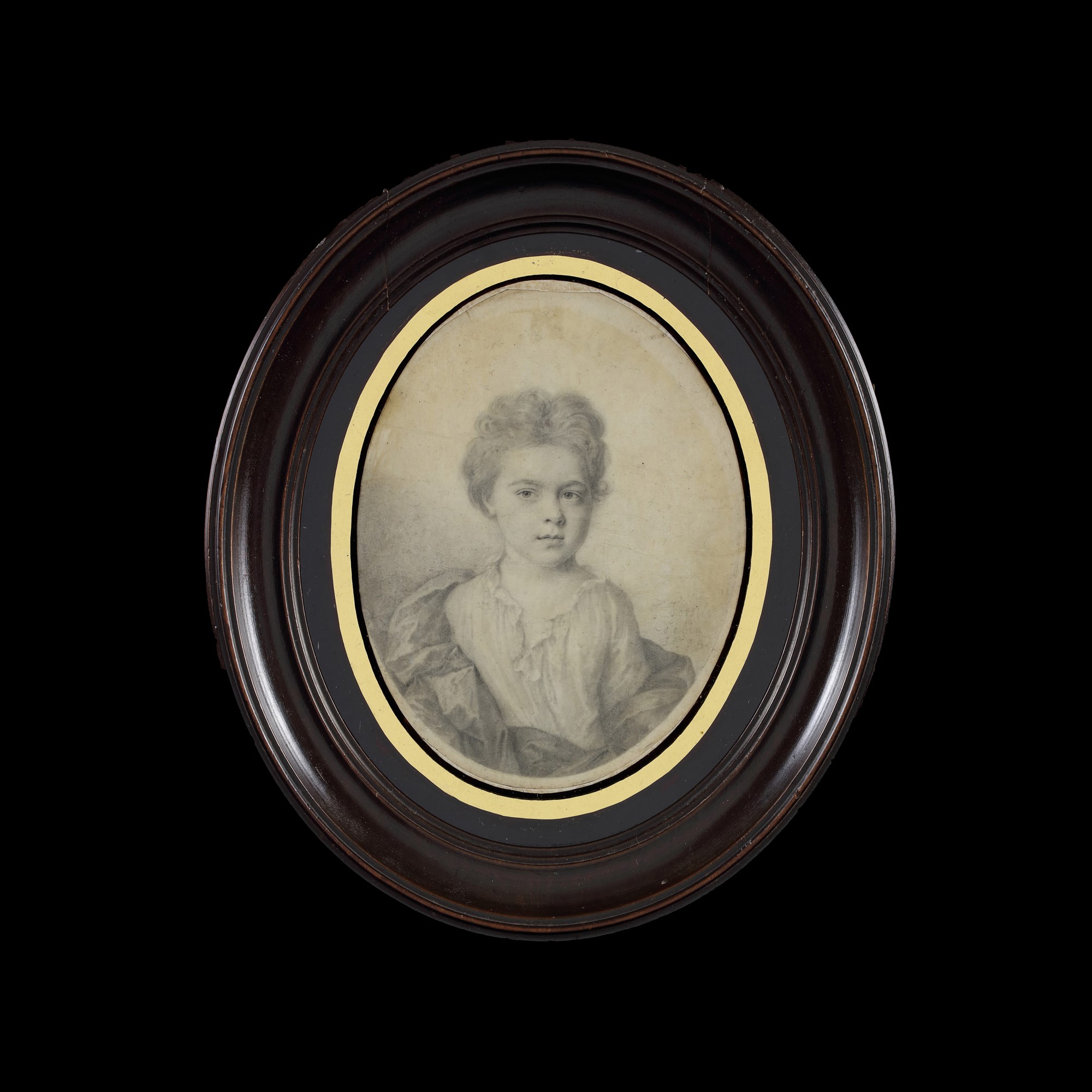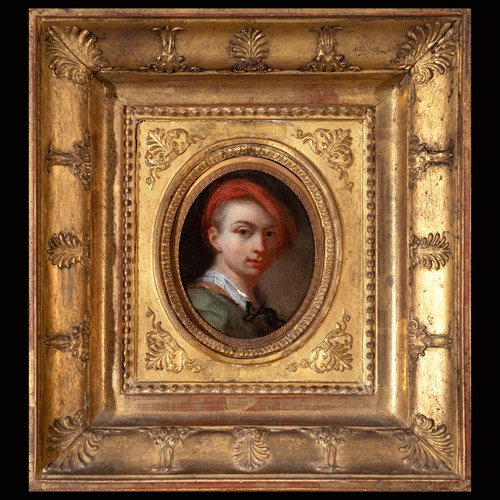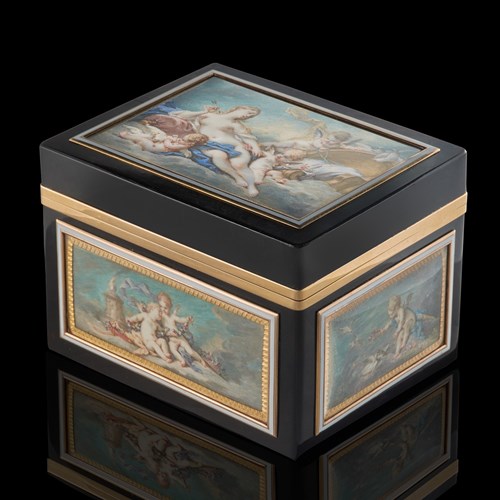THOMAS FORSTER
Plumbago portrait of a young Girl, likely Elizabeth or Mary St Lo
The Limner Company : Portrait Miniature
Date 1705
Medium Plumbago on vellum
Dimension 10.5 x 8.2 cm (4¹/₈ x 3¹/₄ inches)
George St Lo was a captain in the Royal Navy and naval administrator. In 1689, he was taken prisoner by the French following a 7-hour engagement with a ship superior to his own. Upon his release, St Lo published an account of his imprisonment and his observations of the French navy. The battle had left St Lo with severe injuries that prevented him from seafaring again, and, after declining an offer to become governor of New York, he accepted a commissionership. Negligence in this role however, lead to construction workers for the first Eddystone Lighthouse being captured by a French privateer. His next appointment was as Commander-in-Chief of ships in the Medway and at the Nore until the accession of George I. At around the same time he began to pursue a career in politics and was successfully elected in 1701 as the Member of Parliament for Weymouth and Melcombe Regis. He also served as equerry to Prince George of Denmark c.1700-04.
The sitter’s mother, Elizabeth Chiffinch, was granddaughter of notable courtier Thomas Chiffinch (Cheffin) (1600-1666). Thomas and his brother William, had been companions in exile of Charles II and his brother James, late James VII & II.
Plumbago miniatures became popular in England for a short time circa 1660, the fashion for plumbagos having developed alongside the Netherlandish print trade since the early 17th century. They were often used as the basis for engravings and later sought to imitate the appearance of mezzotint engravings, associated with the Old Masters.
The term plumbago derives from the Latin word for lead, plumbum, although they were more commonly drawn in graphite. The pure graphite would be sharpened to a point and used like a modern-day pencil on a vellum or (later) paper support. As drawings, they were a cheaper alternative for patrons compared to traditional miniatures. Their popularity was short-lived however and they were not much produced after 1720.
Thomas Forster was a leading plumbago artist, his highly finished works considered by many to be the finest of the artform. Forster’s sitters are usually depicted luxuriating in dynamic swathes of drapery. Forster was particularly adept at capturing the shimmer of light across fabric, to which the monochromatic medium lent itself. His works are held in many major collections including the Victoria and Albert Museum, Huntington Library (California), the British Museum and the Royal Collection.
[1] Sotheby’s, London, ‘Early English Drawings and Watercolours from the Collection of Colin Hunter’, 11 July 1991, lot 31; Lowell Libson & Jonny Yarker Ltd, ‘The Spirit & Force of Art: Drawing in Britain 1600-1750’, catalogue 2018, cat. no.64, p.166 – view online here.
[2] Sotheby’s, London, ‘The Pohl-Ströher Collection of Portrait Miniatures, Part III’, 5 December 2019, lots 241-243
Date: 1705
Medium: Plumbago on vellum
Signature: Signed and dated lower right: ‘T Forster / Delin / 1705’
Dimension: 10.5 x 8.2 cm (4¹/₈ x 3¹/₄ inches)
Provenance: Mrs Felton Mathew (1890);
Mrs Agatha Thornycroft;
Mrs Robert Tritton of Godmersham Park, Kent;
her executor's sale, London, Christie's, 12 July 1983, lot 532;
where acquired by Dr Erika Polh-Ströher (1919-2016);
Christie’s, London, Old Master Day Sale including Old Master Paintings, Drawings and British Works on Paper, 29 July 2020, lot 245;
Private Collection, UK.
More artworks from the Gallery




-Portrait miniature of Félix-Louis de Cornette de la Minière, in his prison cell at Château du Luxembourg, wearing _T638964936728418030.jpg?width=500&height=500&mode=pad&scale=both&qlt=90&format=jpg)


-Portrait Miniature of James Francis Edward Stuart (1688-1766), 'The Old Pretender', wearing armour, white lace st_T638925025737307861.jpg?width=500&height=500&mode=pad&scale=both&qlt=90&format=jpg)
, after JOHN HOPPNER (1758-1810)-Portrait of Frances Fitzroy, née Mundy (d.1797), turned to the left, her head resting on h_T638835205315018246.JPG?width=500&height=500&mode=pad&scale=both&qlt=90&format=jpg)
